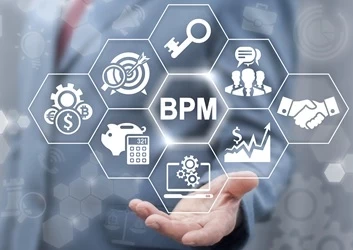Organisations need to understand six elements of customer behavior to truly achieve the benefits from BPM
The digitally networked, globally connected customers of today don’t abide by the rules of the industrial age, argues contributor Steve Towers. That’s why it’s time to rethink the factory line approach to business transformation.
|
The business world we have created is in the image of the industrialised Victorian world. It still largely operates as a factory does with a series of inputs, activities and outputs. The structures we inhabit were conceived in the birthing of the industrial revolution 250 years ago. Think about how work is organised – in command and control military models with payment systems based on spans of control and authority over others. Is this still appropriate in the 21st century? Some say not and have reconceived the business model in the light of modern challenges and opportunities. Not least of these challenges is the promiscuous, rebellious, fickle customer who has at their finger tips more information about your products and services then you can probably remember. Connected through global networks and exchanging information in an instant these customers do not operate to industrial age rules. Expectations are molded and changed daily and the previous linear left to right world of the factory just is not capable in meeting new needs and demands. |
The org chart hasn't changed much in the last 250 years Photo source: www.flickr.com/photos/mwichary/2356663850/ |
Accordingly, we have to rethink our delivery beyond factory line outputs to successful outcomes and results. The way we organize ourselves changes, the very model of our business is turned outside in.
Several examples of this quantum shift in the way work is done are available, including business models such as Apple, Samsung, Southwest airlines, Emirates and Indigo.
BPM is more than BPR
I like the contention that BPM is just BPR with a bit of spit and polish applied, however it is so much more than the BPR construct of the early 90’s. In their seminal work Reengineering the Corporation (the so called BPR bible) Hammer and Champy were correct in observing that process needed radically changing.
However, the work of BPR, albeit radical in its proposition accepted the industrialised view of the world as its reality. This is not so.
Process is just another name for the work we all do and as such is the very organization of our people and its structure. Starting over with blank sheets of paper and then redesigning another hierarchical factory based model was never going to work.
Business transformation in the 21st century context understands that the previous map is not the territory and we need to place the customer at the center of everything we do. Not off to the side the way the factory model does. Goodness me we often don’t have space on our organization charts to even draw the customer, and then complain when employees observe the customer isn’t their job.
It is a Copernican shift in thinking and practice that reveals itself everyday for those organisations able to recast themselves with successive business results demonstrating clearly to shareholders and customers those who get it and those who don’t. Listed amongst the failing former champions are household names, some already bankrupt, who have persisted with the industrial mindset despite the wealth of evidence pointing to the need to rethink and retool. Advanced BPM aka Outside In, provides that capability.
[inlinead]
How companies can address these dynamic client needs
There are six elements of customer behavior that organisations need to understand and articulate to truly achieve the benefits from BPM:
|
Customers have access to global networks and are vocal about what they like and dislike |
#1: Customers demand choice Whether it is lipstick, shoes, cars or electronics this demand creates complexity and the need for intelligence across all our workflows. Being able to anticipate and ultimately shape choices is a massive differentiator. #2: Customers have become rebellious They vote with their feet. They share information across global networks. They rank, sort and sift to exchange good and bad behaviors. Twenty years ago you would say that when someone complained they would tell 20 others of their gripe. These days you can tweet to millions in 20 seconds. |
#3: Customers have high expectations
Being informed of the good and the bad creates expectations. Being able to manage these is key to ongoing success. And by the way it isn’t about exceeding expectations. Do that and you create a new expectation every time. It is about doing things really well and delighting your customers along the way.
#4: Customers are promiscuous
They are not going to wait around while you get your product and service right. They do not like being locked in with punitive contracts. They are shopping around and moving their business to get the best deals, today, tomorrow and forever. If your structures and working do not allow them to do so they will go elsewhere – quickly.
#5: Customers demand many channels to access service and product
Take for example a typical bank account. Customers want immediate access through their mobile devices, by phone, by letter, by personal visit and at the ATM 24 by 7. In addition they want the correct information across all these channels when they need it. Industrialised processes were never designed to work this way and, in fact, create a barrier to successful customer outcomes.
#6. Customers are no longer consumers. They have become prosumers.
Customers now know more about your products and services than you do. With immediate access anywhere they research and evaluate and ask questions. This requires a complete shift in approach, not just amending a few processes to provide greater flexibility. It is a mindset shift that produces new ways of engaging and operating with prosumers. Contrast for example the Apple shopping experience with an old style provider, perhaps Nokia. Which works best for the majority? You decide.





















